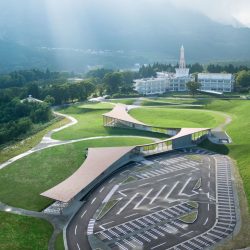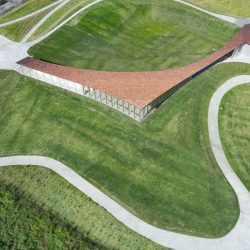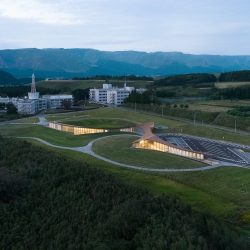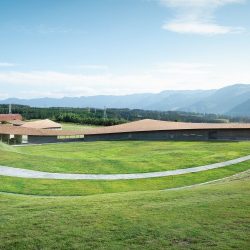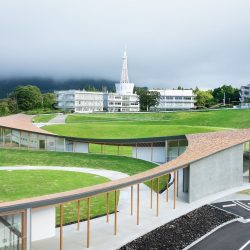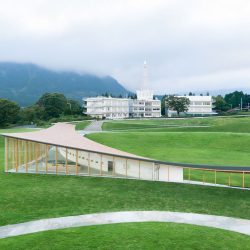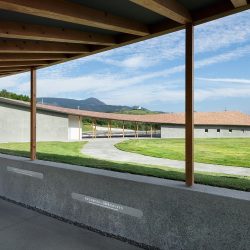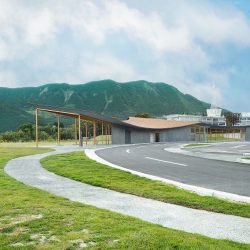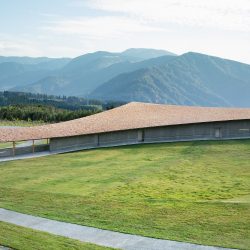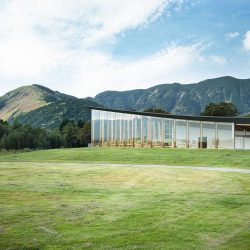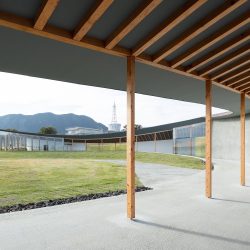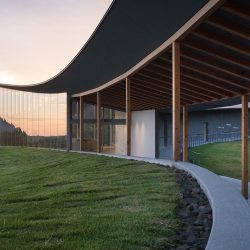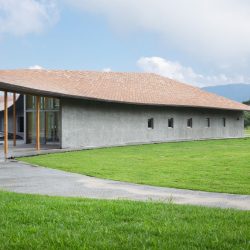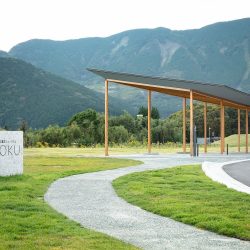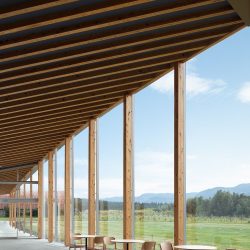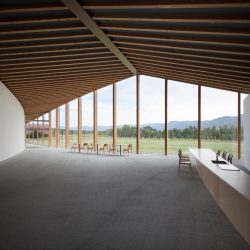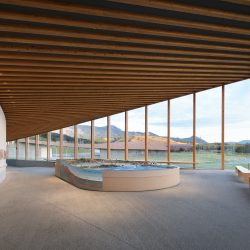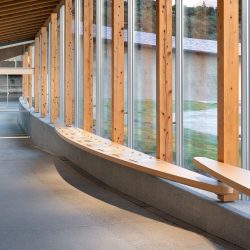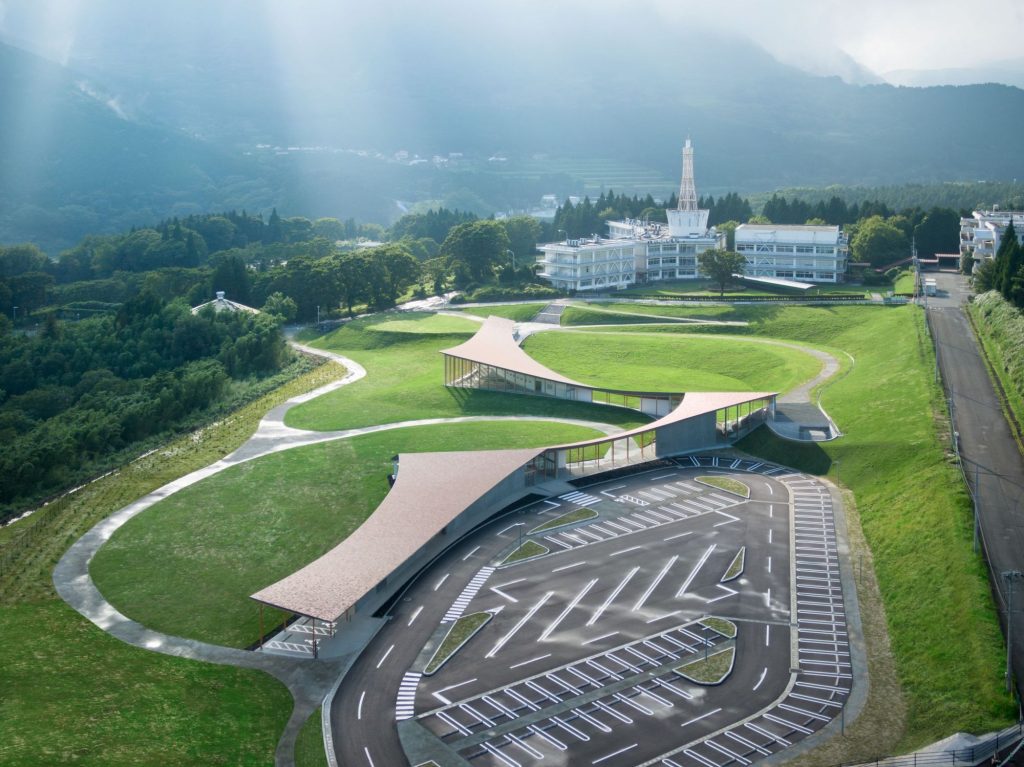
o+h / maki onishi & yuki hyakuda . photos: © Takumi Ota Photography
The Kumamoto Earthquake Disaster Museum KIOKU is dedicated to preserving the memories of the Kumamoto earthquake for future generations. In its design, two key aspects were prioritized. The first is how the architecture can respond to the surrounding landscape of Aso. The second is how the architecture can be positioned within the overall experience of visiting this site.
Architecture Responding to the Landscape
When visiting the site, we were deeply moved by the grandeur of the Aso landscape. From the site, one can see the smoking Nakadake, the horizontally extending outer rim mountains, and the site of a massive landslide caused by the Kumamoto earthquake. These views allow one to physically feel the movements of the earth over thousands of years. Therefore, we proposed a roof nearly double the size required for the 1,300 square meters requested in the competition, designed to curve in a way that frames the surrounding landscape. We aimed for the architecture to draw attention to the Aso mountains and sky, creating a space that mediates between the landscape and people.
Architecture as Part of the Experience
Visitors to this site leave the city, cross the outer rim mountains, encounter the Aso landscape, and experience the museum. They also visit the adjacent earthquake relic, the former Tokai University Building No. 1, where they witness the raw impact of the earthquake. Afterward, they return to the museum before heading back home. We envisioned the architecture as being positioned within this entire experience of moving from the city to nature and back again. The roof, which gracefully spans the site, serves as both an exhibition space and a pathway guiding visitors to the former Building No. 1. Half of the roof remains as an eave, creating a space for indoor exhibitions on the Kumamoto earthquake, while the eave encourages contemplation of the surrounding landscape.
By not confining the exhibition space indoors, we hope that the experience of visiting the slightly distant former Building No. 1 and the nearby earthquake relics on the way back can feel interconnected.
While these two themes may seem entirely different, they are also fundamentally linked. In other words, we are exploring architecture that emerges meaningfully within relationships that extend beyond the site itself. We currently feel a sense of possibility in creating architecture that exists as an entity while forming an inseparable connection to its land.·
_
Kumamoto Earthquake Museum KIOKU
Year
2023
Location
Aso, Kumamoto
photo
Takumi Ota

